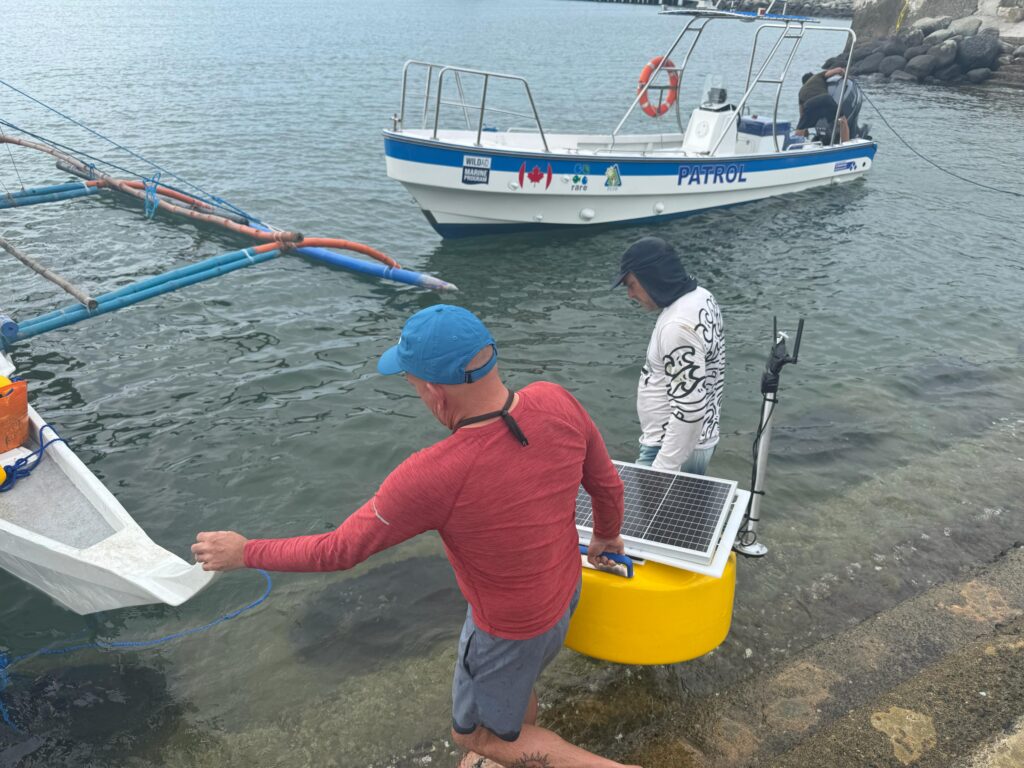
Imagine every color of the rainbow stretching far beyond what the eye can see, spanning roughly 6 million square kilometers, and teeming with life. If you could take in the entire area in one glance, you’d see 75% of the world’s known coral species, more than 2,000 species of reef fish darting between their formations, dozens of whale and dolphin species diving to shadowy depths, sharks migrating through precious corridors, and manta rays gliding effortlessly through the water. There would be eels winding through coral canyons, dugongs grazing in seagrass meadows, and six of the world’s seven marine turtle species paddling gracefully through the currents.
Here, within a loosely shaped triangle of the Western Pacific Ocean, lies the Coral Triangle — known as the “Amazon of the Seas” and recognized as the most biodiverse marine ecosystem on Earth.
A Lifeline for People and Planet
Stretching between six countries — Indonesia, Malaysia, Papua New Guinea, the Philippines, Solomon Islands, and Timor-Leste — this extraordinary ecosystem connects not only coastlines, but countless communities. More than 120 million people rely on the Coral Triangle for food, income, and protection from storms, according to the World Economic Forum. Yet its health has implications far beyond its perimeters. The Coral Triangle offers insights about how reefs everywhere might be able to withstand climate change.
A large number of reefs worldwide are struggling to survive rising temperatures, but the majority of the reefs in the Coral Triangle remain unbleached. That resilience has captured the attention of scientists eager to understand how this diverse living network has endured for 20 million years. Nonetheless, even ecosystems as adaptable as this one are not immune to human impact.
The Coral Triangle and Its People Are at Risk
Among the greatest dangers facing the Coral Triangle is blast fishing, an illegal practice that uses homemade explosives to kill or stun fish before harvesting them. This tactic destroys not only fish, but every life form up to a 100-foot radius from the explosion including slow-growing coral reefs — the very foundation of fish habitats.
Blast fishing creates a devastating double bind. While a single explosive may produce a larger and faster catch than traditional nets, what seems profitable in the moment ultimately undermines the future. As coral reefs are reduced to rubble, fish populations dwindle, and eventually the communities that rely on these waters are left with less and less to catch. It’s a cycle that can drive fishers to use blast fishing in the first place to maximize their haul, which in turn harms the whole ecosystem and accelerates fish stock decline. But the impact goes beyond ecological destruction.
Ask a local Filipino how law enforcement might spot a blast fisher, and they’ll tell you to look for someone missing some or all of their fingers. Equally dangerous, a fisher may breathe air from an improvised compressor to remain underwater longer when collecting fish following an explosion — risking both carbon monoxide poisoning and decompression illness. It’s a deadly practice that puts those who rely on it in constant danger.
A Future Worth Fighting For
To break this cycle and allow dead zones to recover, WildAid works alongside the Philippine government and partners like Rare to strengthen protections in Southern Leyte and Palawan. We employ a multi-faceted approach:
- Bolstering law enforcement capacity: We’re providing essential support to local and national law enforcement agencies. Our activities include developing patrol strategies, enhancing coordination across law enforcement entities, offering policy and training support, and supplying equipment — including patrol boats and scuba gear to help officers collect underwater evidence.
- Community engagement and education: We’re equipping and training 16 community-led patrol teams known as Bantay Dagat, or “Guardians of the Sea,” who are on the front lines of patrolling coastal waters.
- Technology that boosts deterrence: New tools are helping law enforcement swiftly detect and respond to illegal activity. This month, we worked with the Philippine coast guard and other agencies to test hydrophone sensors that track unusual sounds like explosions underwater. These sensors allow law enforcement to dramatically extend their surveillance range without exposing their presence — a game-changer is protecting reefs.
Through strengthened law enforcement response, community engagement and education, and the use of technology to elevate capability and deterrence, WildAid is helping to protect reefs, and ensure that both wildlife and coastal communities in the Coral Triangle can thrive.


Together, We Can Make an Impact
Healthy reefs protect coastlines from storms, sustain livelihoods, and nurture life across the sea. They are the backbone of marine biodiversity, and their survival depends on all of us. Together, we can safeguard the Coral Triangle for generations to come.
Stay in touch and get the latest WildAid updates.
SIGN UP